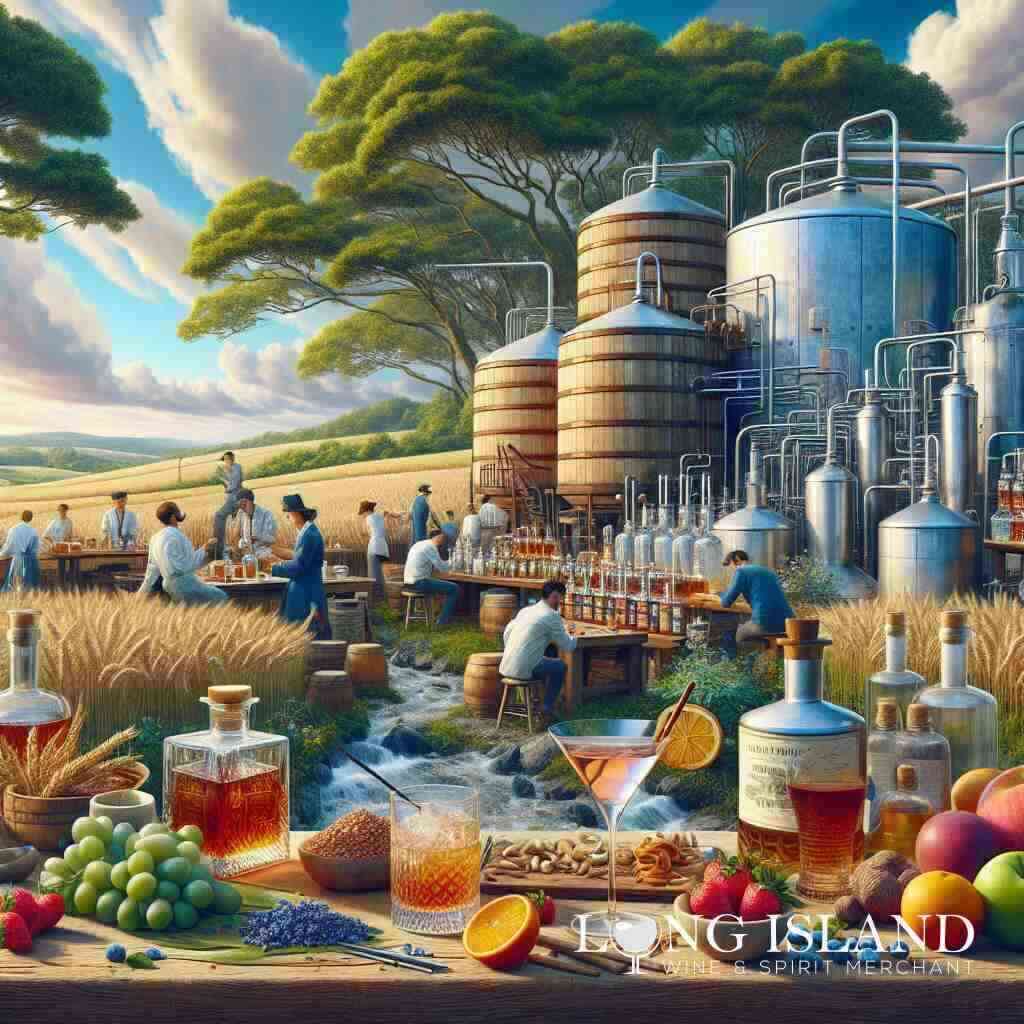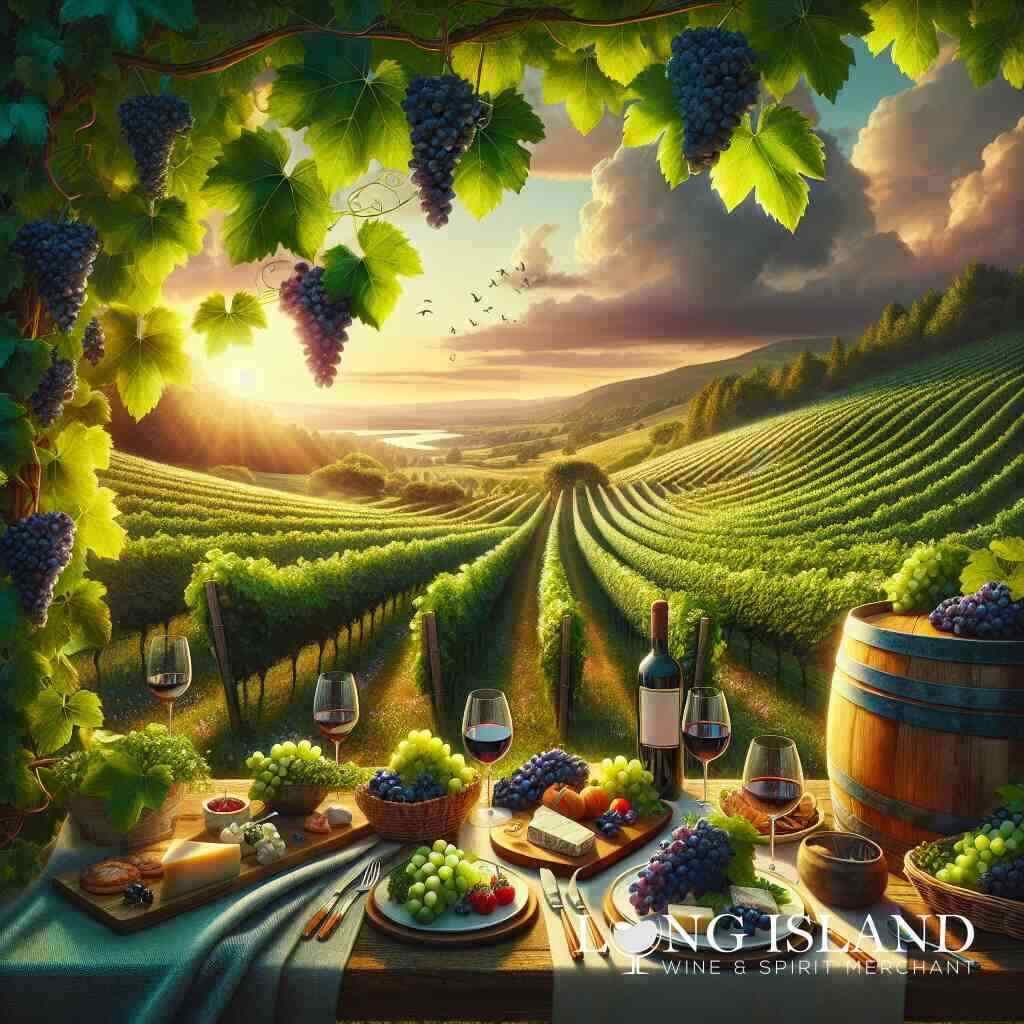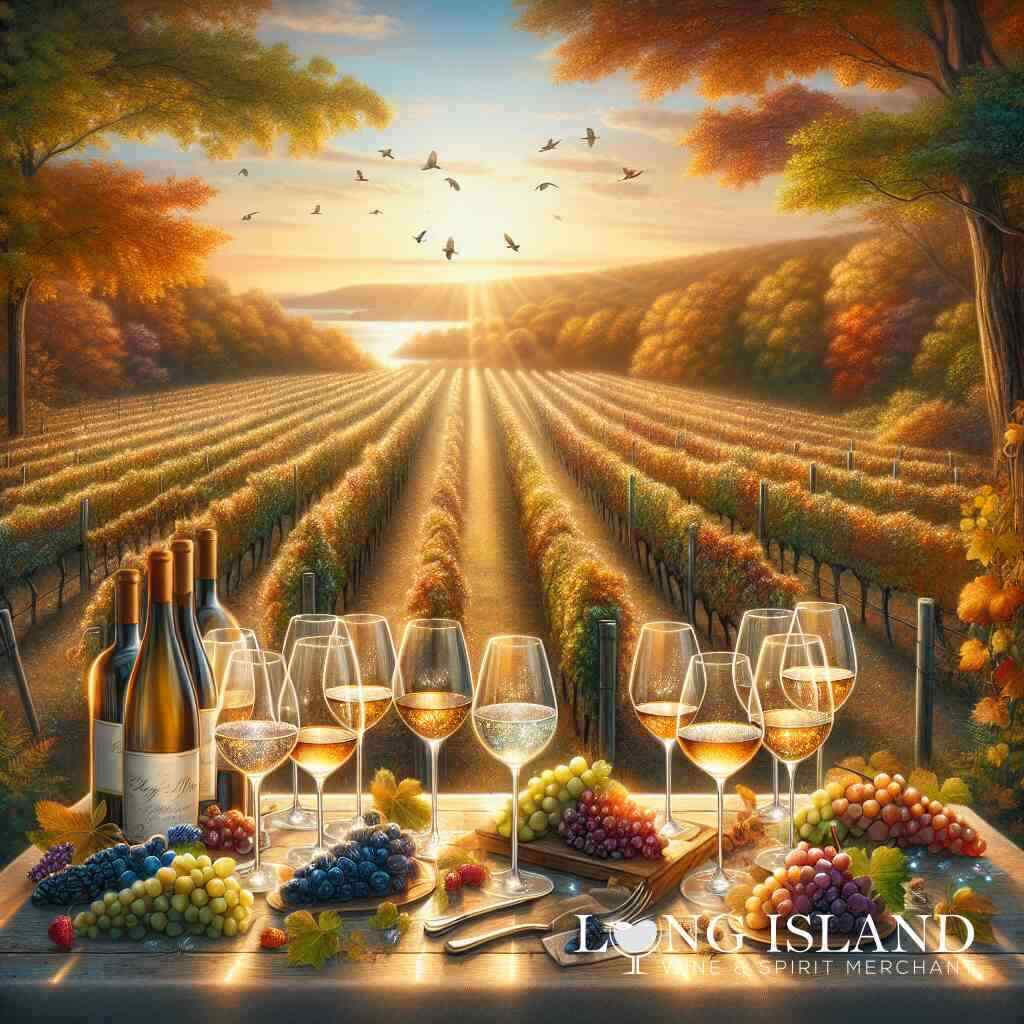
Ultimate Guide to Fine Wine Tasting with Long Island Experts
January 17, 2025
Embarking on a Wine Journey
Discover Long Island’s Wine Heritage
Long Island’s wine region is a tapestry woven with rich history and modern innovation. Dating back to the 1970s, when the first vines were planted, the area has blossomed into a haven of world-class wineries. These establishments embrace both traditional craftsmanship and emerging technologies to produce exceptional wines. The diverse microclimates and soils contribute to complex flavor profiles, making Long Island wines a significant player on the global stage. For individuals eager to explore this vibrant heritage, Long Island Wine and Spirits offers an immersive experience of the local wine culture that will leave you both enlightened and inspired.
Navigating the World of Fine Wine with Local Experts
Engaging with local experts transforms wine tasting into a profound journey of discovery. Learn more about What Makes Long Island Wine & Spirit Merchant Unique. In Long Island, seasoned sommeliers and vintners are eager to share their wealth of knowledge and passion. These experts explain the nuances of tasting to help you refine your palate and enhance your appreciation for subtle wine flavors. By consulting these connoisseurs, you can unlock a deeper understanding of the unique characteristics and stories each bottle holds. Whether through guided tastings or vineyard tours, you’ll gain invaluable insights into the artistry of wine production. Start your educational adventure with our specialized wine services by Long Island and connect with the essence of fine wine and good spirits.
The Evolution of Wine Tasting: A Modern Approach
Wine tasting has evolved beyond traditional methods to incorporate modern, interactive elements that elevate the experience. Today, techniques such as the wine aroma wheel and sensory evaluation bring a new level of engagement and expertise to the practice. These tools aid in identifying specific aromas and flavors, deepening one’s understanding and enjoyment. The contemporary approach also emphasizes pairing wine with food, allowing for a more comprehensive exploration of flavors. By mastering these modern techniques, you can transform your wine-tasting ritual into a remarkable sensory journey. For those interested in contemporary approaches to wine education, the Wine education guide offers a thorough insight into current practices and innovations.
Decoded Sips: The Art of Sensory Evaluation
Harnessing the Power of the Wine Aroma Wheel
The wine aroma wheel is an essential tool for those looking to deepen their understanding of wine tasting. This innovative device categorizes aromas into distinctive groups, such as floral, fruity, and earthy, providing a structured approach to identifying scents in your wine. By using the wine aroma wheel, enthusiasts can train their olfactory senses to distinguish subtle differences in aroma. Long Island wine experts employ this tool to enhance their comprehension of the intricate layers within each bottle. To see how this tool can revolutionize your tasting experience, explore the Wine tasting tips by experts.
Palate Development: Training Your Taste Buds
Developing your wine palate is a journey of engaging your senses and expanding your flavor vocabulary. Understand this process better by exploring the Complexities of Sweet Red Wine Selection. Start by sampling a variety of wines from different regions and grape varieties to expose your palate to diverse tastes and textures. Pay attention to the initial taste, mid-palate, and finish, noting how each aspect evolves. Long Island wine and spirits offer an expansive selection, making it easier to experiment with new flavors and refine your taste. By cultivating your tasting skills, you can enhance your appreciation for the rich tapestry of flavors that fine wines present. For more on nurturing your palate, consider Crafting your wine palate.
Tasting Techniques That Transform Simple Sips into Memorable Moments
Tasting wine is more than just sipping; it’s an immersive experience that involves multiple techniques to appreciate the beverage fully. Swirling the wine in your glass oxidizes the liquid, releasing its complex aromas. Taking small sips allows the wine to coat your tongue, enabling you to analyze its body, acidity, and sweetness. Tasting techniques emphasize mindfulness, encouraging tasters to savor each element of the wine thoughtfully. Long Island wineries offer tasting events that teach these techniques, transforming a simple sip into a memorable experience. To delve deeper into making each tasting session exquisite, visit a Wine tasting blog.
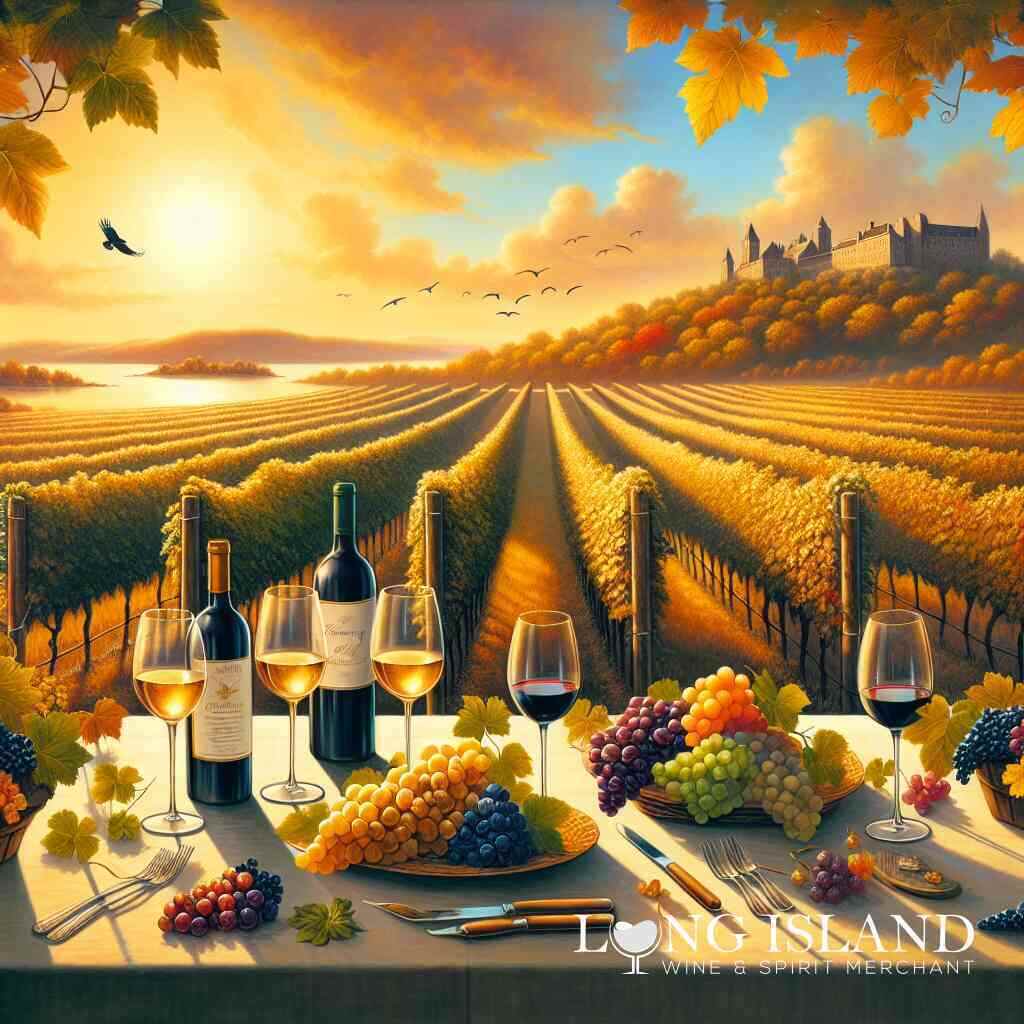
Wine Character: Exploring Flavor Profiles and Finishing Notes
From Aroma to Bouquet: Unraveling Wine’s Layers
Delving into the complex world of wine flavors begins with understanding the intricate journey from aroma to bouquet. Aromas in wine are the initial scents you perceive and are often indicative of the grape variety used. As the wine opens up, these aromas evolve into more complex bouquets, showcasing the wine’s depth and aging process. Engaging with Long Island Winery’s insights provides a deeper understanding of how these scents intertwine to create a complete sensory profile. Recognizing this transition enriches your tasting experience, enabling you to appreciate the artistry involved in fine wine craftsmanship.
Understanding Wine Body and Texture
The body of a wine refers to its weight and fullness as it coats your palate. Wines can range from light-bodied, like a crisp Pinot Grigio, to full-bodied, as seen in a rich Cabernet Sauvignon. Understanding the body helps in appreciating the complexity and structure of the wine. Texture adds another layer, whether it’s the silky smoothness of a well-aged Merlot or the vibrant zestiness of a young Riesling. By exploring and Understanding wine diversity, you can refine your preferences and discover new favorites that complement your taste sensation.
Subtle Wine Flavors: Beyond the Basics
While primary flavors like fruit and spice are immediate, subtle wine flavors often reveal themselves gradually. These nuances might include hints of leather, tobacco, or even a delicate minerality. Such complexities are what make wine tasting a profound art form. Discovering these flavors involves patience and practice, leading to a richer appreciation and understanding of wines. Engaging with local wine experts can provide invaluable insights into these subtle characteristics, transforming your tasting routine into a journey of flavor exploration and Unlocking Long Island wines. Embrace the intricacy and elevate your knowledge of the hidden notes within each bottle.
Masterful Pairings: Marrying Wine with Food
Strategies for Winning Wine Pairings
Perfecting wine pairings involves understanding the harmonious relationship between food and wine. By knowing how different elements interact, you can create an exquisite culinary experience. Start with considering the wine’s acidity, sweetness, and tannin levels, as these characteristics can either complement or clash with food flavors. A bright, acidic white wine, for instance, pairs beautifully with creamy pasta, cutting through the richness and refreshing your palate. Meanwhile, a robust red with balanced tannins might enhance the juicy flavors of a well-cooked steak. Explore Wine pairing suggestions to delve deeper into the nuances of creating winning combinations and elevate your dining experiences.
Wine and Cuisine: A Sensory Symphony
Wine and cuisine together can elevate a meal to a transcendent sensory experience. The interplay between the aromas, flavors, and textures of wine and food creates a dynamic harmony akin to a symphony orchestra. A well-paired dish highlights the wine’s subtle notes, while a carefully selected vino can enhance the flavors of a gourmet entrée. For a perfect sensory symphony, try pairing a fruit-forward rosé with spicy Asian dishes, as the wine’s sweetness balances the heat. Alternatively, a buttery Chardonnay can resonate beautifully with roasted poultry, each sip weaving into the dish’s flavor profile. This art form celebrates the versatility and depth of wines, turning meals into memorable occasions. For further insight into the world of wine and food pairings, explore the Rosé wine details which highlight the adaptability of this cherished varietal.
The Wine Tasting Framework: Guidelines for Pairing Success
Having a structured framework for wine tasting and pairing can facilitate success in any culinary adventure. Begin by matching the weight of the wine with the dish; a light-bodied wine usually pairs best with delicate dishes, while robust wines pair well with hearty, rich dishes. Consider how the flavor intensity and characteristics of the plate interact with the wine. Scenic Long Island, home to diverse wineries, offers abundant opportunities to master this art through immersive tastings. Within this framework, personal preferences should guide the final choice, ensuring that each pairing reflects individual palate preferences. Embark on a tasting exploration to appreciate the varied nuances of fine dining with wine and see how these guidelines can enhance your culinary experiences at Long Island’s vintage spirits, offering a profound depth to every meal shared with wine.
Cultivating Appreciation: Wine Tasting Etiquette and Culture
Wine Glassware: Enhancing Your Tasting Experience
Selecting the proper wine glassware is essential to elevating your tasting experience and unlocking the full potential of each bottle. Explore the topic further in Master Wine Tasting Etiquette with Long Island Wine & Spirit Merchant. Different wine styles often demand distinct glass shapes to express their aromatic and flavor profiles fully. For instance, a large bowl glass is ideal for red wines, as it allows more oxygen to interact with the wine, enhancing its complex bouquet. Conversely, a slimmer glass suits white wines, preserving their chilled temperature and directing delicate aromas toward your nose. The right glass not only contributes to the aesthetic appeal but also plays a critical role in the functional aspects of wine tasting. At Long Island Wine & Spirit Merchant, we offer a diverse array of glassware options to suit every type of wine enthusiast’s needs. Explore these essentials and enhance your journey into the art of fine wine appreciation.
Terroir and Wine: The Soul of Viticulture
Terroir represents the environmental factors that influence grape growing, giving each wine its unique character and authenticity. This concept encompasses soil composition, climate, topography, and even the surrounding ecosystem. Long Island’s terroir is especially notable for its diverse microclimates and maritime influence, which create wines rich in complexity and distinctive flavor profiles. Dive deeper into the World of Long Island’s Artisanal Spirits. These natural characteristics are meticulously harnessed by expert vintners who understand the profound impact of terroir on wine quality. By appreciating the nuances of terroir, wine lovers can gain insight into the origins and individuality of their favorite wines. Visit our Understanding fFine resource to delve deeper into how terroir shapes the essence of a bottle’s character.
Long Island Wineries: Secrets from the Vine
Long Island is home to a fantastic selection of wineries that reveal secrets from the vine, offering a profound journey into the heart of fine wine production. Each winery brings its unique history, innovation, and dedication to crafting wines that reflect the rich terroir of the region. Discovering these wineries is akin to uncovering hidden gems, each presenting a narrative that enriches the tapestry of Long Island’s wine culture. Tasting events, vineyard tours, and intimate gatherings with local experts provide a glimpse into the intricate winemaking processes and philosophies of the region’s artisans. For those passionate about discovering the full spectrum of Long Island wines, embarking on this exploration unveils a world of rewarding flavor and cultural experiences. For guidance in navigating this exploration, consider Exploring Long Island’s wine selection and uncover the best-kept secrets of this vibrant viticultural landscape.
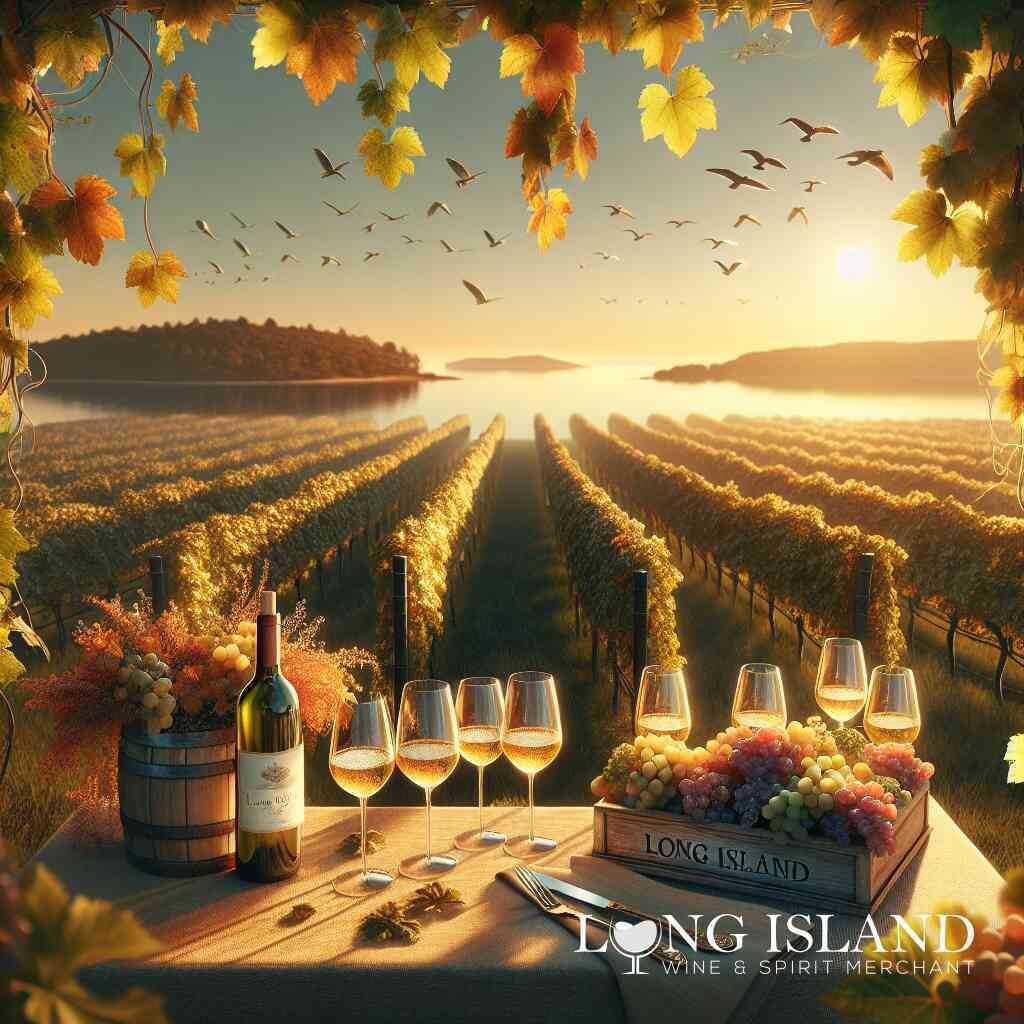
Final Pour: Reflecting on Your Wine-Tasting Experience
Capturing Tasting Notes: Developing Your Wine Journal
Keeping a detailed wine journal is an invaluable tool for deepening your wine appreciation. This practice involves recording your tasting experiences, noting aspects such as aroma, body, texture, and finish. Begin by describing the color, clarity, and characteristics of the wine. Develop a consistent vocabulary for tasting notes that captures your observations and evolves with your growing expertise. By regularly updating your journal with comprehensive entries, you can track your palate development and identify patterns or preferences in wine selections. Engage with the Commack New York wine shops community to share tasting experiences and gain new insights into local varieties and vintages.
Recap and Reset: Tasting Palate Cleanse
After indulging in a series of wine tastings, it’s crucial to cleanse your palate to maintain its sensitivity. Proper palate cleansing involves consuming neutral foods and drinks, such as bread, water, and unsalted crackers, which help reset your taste buds. This practice ensures that each tasting session provides an accurate and fresh sensory experience, allowing you to appreciate subtleties in wine flavor profiles without residual influence from previous tastings. Incorporating palate cleansing into your wine journey enhances your taste perception, fostering a deeper understanding of the diverse array of Long Island wine offerings.
Furthering Your Knowledge: Continuing the Wine Education Journey
As your interest in wine deepens, exploring advanced educational opportunities becomes essential. Long Island offers numerous chances to expand your knowledge through courses, workshops, and events focused on the art of wine tasting. Enrolling in educational programs not only sharpens your skills but also connects you with a network of fellow enthusiasts and experts. Delving into comprehensive wine studies fosters a nuanced appreciation for the subtleties and complexities inherent in each bottle. Start this educational adventure by browsing and Shopping fine wines to explore diverse selections that challenge and enhance your tasting abilities. Embrace the journey and continue to refine your palate with every pour.
Frequently Asked Questions
Question: How does the wine aroma wheel enhance the sensory evaluation of wine at Long Island Wine & Spirit Merchant?
Answer: The wine aroma wheel is an innovative tool used at Long Island Wine & Spirit Merchant to deepen your understanding of fine wine tasting. By categorizing aromas into distinctive groups such as floral, fruity, and earthy, it provides a structured approach to identifying the scents in wine. This method of sensory evaluation assists wine enthusiasts in refining their olfactory senses to distinguish subtle differences in aroma. Our experienced Long Island wine experts utilize this tool to enhance comprehension of the intricate layers within each bottle, revolutionizing the tasting experience for both novice and seasoned tasters.
Question: What can I expect in terms of wine education and palate development when exploring the Ultimate Guide to Fine Wine Tasting with Long Island Experts?
Answer: At Long Island Wine & Spirit Merchant, we offer comprehensive wine education that complements the Ultimate Guide to Fine Wine Tasting with Long Island Experts. You’ll engage in activities that train your taste buds through varied wine selections. This diverse exposure helps expand your flavor vocabulary by highlighting nuances across different regions and grape varieties. Our guided tastings, hosted by knowledgeable sommeliers, offer insights into unlocking a deeper appreciation for the rich flavor profiles that Long Island wines present. Through our offerings, you can develop your palate and embark on an educational adventure that connects you with the very essence of fine wine.
Question: Why is understanding terroir critical to appreciating Long Island wines?
Answer: Terroir represents the unique environmental factors, including soil composition, climate, and topography, that influence grape growing, giving each wine its authentic character. In Long Island, the diverse microclimates and maritime influence shape wines with rich complexity and distinctive flavor profiles. At Long Island Wine & Spirit Merchant, we focus on unlocking the secrets of terroir, illuminating how expert vintners harness these natural characteristics. Appreciating terroir allows wine lovers to gain insight into the origins and individuality of their favorite wines, fostering a deeper connection with each bottle’s character. Learn more about Exploring the Complexities of Sweet Red Wines Near You.
Question: Can you describe how wine-tasting techniques transform simple sips into memorable moments at Long Island Wine & Spirit Merchant?
Answer: At Long Island Wine & Spirit Merchant, wine tasting is elevated to an immersive experience through educational tasting techniques. These methods include swirling to release complex aromas, assessing the wine’s body, acidity, and sweetness through small sips, and emphasizing mindfulness to savor each element thoughtfully. Such techniques enhance the sensory journey, transforming each tasting session into a memorable moment. Our winery events teach these methods, ensuring that participants savor the full spectrum of aromas and flavors found in Long Island wines.
Question: How does Long Island Wine & Spirit Merchant guide wine and food pairings?
Answer: Perfecting wine pairings is an art at Long Island Wine & Spirit Merchant. Understanding the harmonious relationship between food and wine involves knowing how elements like acidity, sweetness, and tannin levels interact. See more on Mastering the Essentials of Wine Pairing. By providing wine pairing suggestions and curated tastings, we guide you toward creating exquisite culinary experiences. Whether it’s pairing a bright, acidic white wine with creamy pasta or a robust red wine with a well-cooked steak, our insights help you explore the nuances of food and wine harmony through a sensory journey akin to a symphony orchestra. This knowledge elevates dining experiences, making every meal a memorable occasion.


